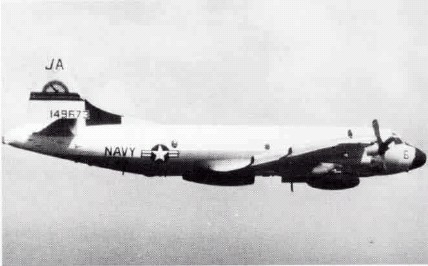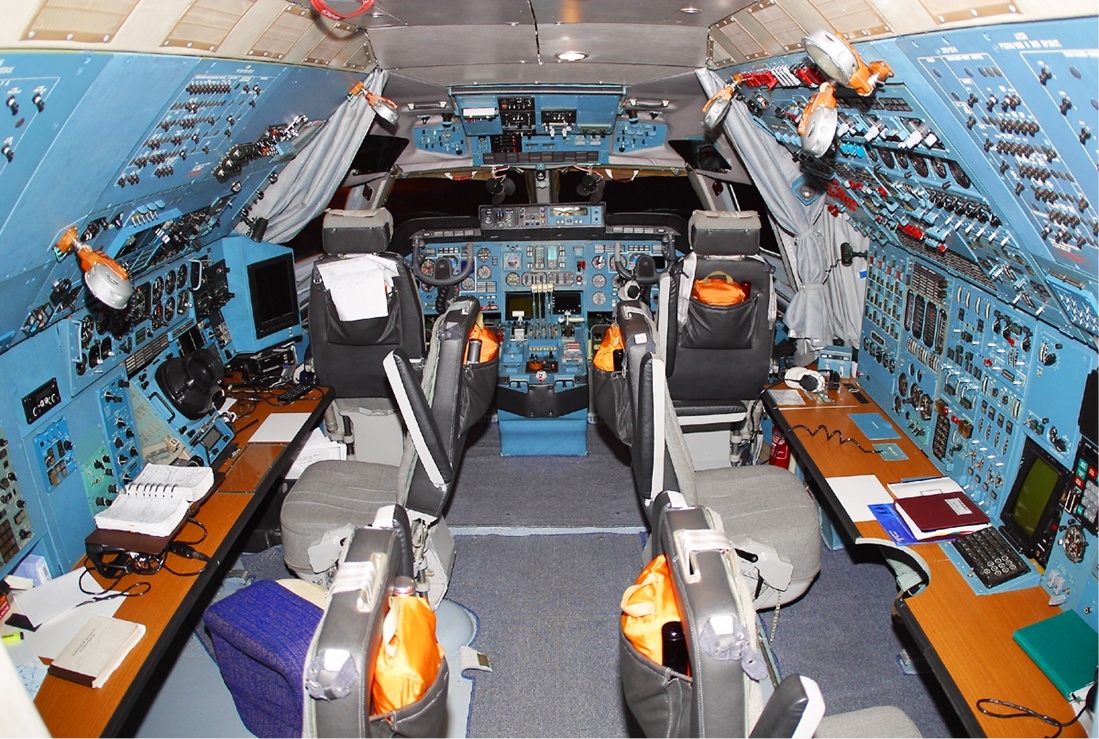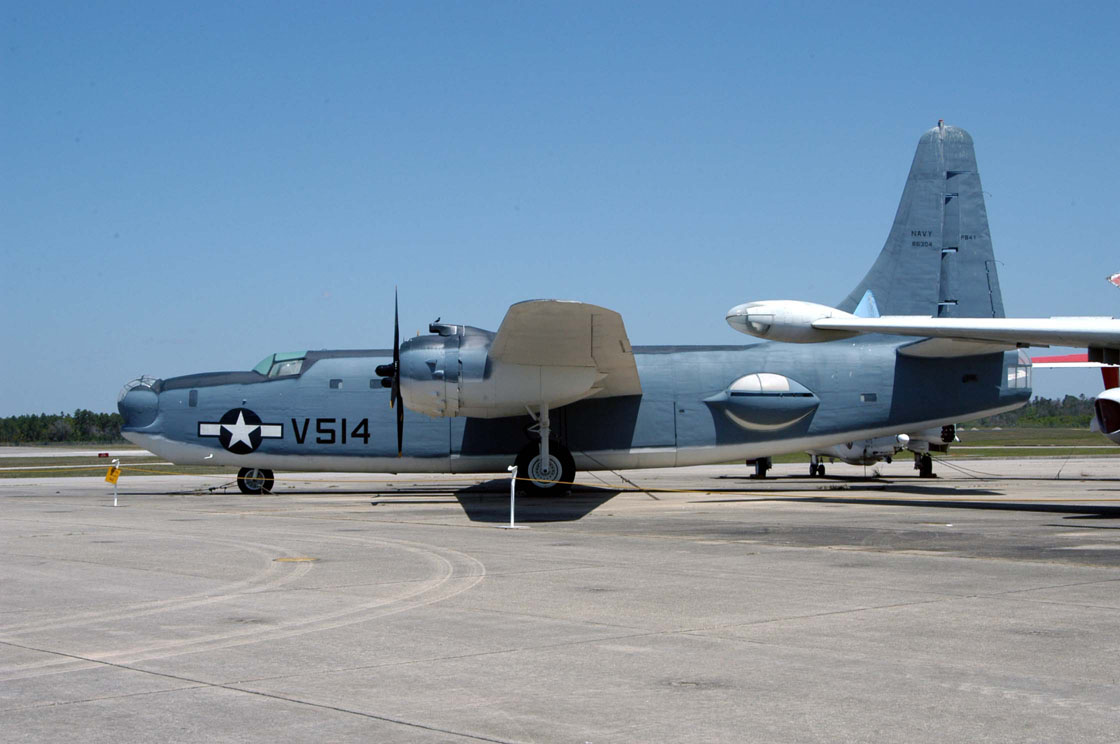|
Lockheed EP-3
The Lockheed EP-3 is an electronic signals reconnaissance variant of the P-3 Orion, operated by the United States Navy. Development A total of 12 P-3C aircraft were converted to replace older versions of the aircraft, which had been converted in the late 1960s and early 1970s. The aircraft is known by the acronym ARIES, or "Airborne Reconnaissance Integrated Electronic System". and has Signals intelligence (SIGINT) capabilities. SIGINT is the interception of signals, whether communications between people (communications intelligence—abbreviated to COMINT) or from electronic signals not directly used in communication (electronic intelligence—abbreviated to ELINT). The EP-3E generally has a crew of 24, including linguists, cryptographers and technicians. The squadrons that flew the EP-3E also flew the Lockheed EC-121 Warning Star from 1962 to 1974 and the Douglas EA-3B Skywarrior from 1960 to 1991. There are 11 EP-3Es in the Navy's inventory, the last of which was deliver ... [...More Info...] [...Related Items...] OR: [Wikipedia] [Google] [Baidu] |
Signals Intelligence
Signals intelligence (SIGINT) is intelligence-gathering by interception of '' signals'', whether communications between people (communications intelligence—abbreviated to COMINT) or from electronic signals not directly used in communication (electronic intelligence—abbreviated to ELINT). Signals intelligence is a subset of intelligence collection management. As classified and sensitive information is usually encrypted, signals intelligence in turn involves the use of cryptanalysis to decipher the messages. Traffic analysis—the study of who is signaling whom and in what quantity—is also used to integrate information again. History Origins Electronic interceptions appeared as early as 1900, during the Boer War of 1899–1902. The British Royal Navy had installed wireless sets produced by Marconi on board their ships in the late 1890s, and the British Army used some limited wireless signalling. The Boers captured some wireless sets and used them to make vital tran ... [...More Info...] [...Related Items...] OR: [Wikipedia] [Google] [Baidu] |
Antonov An-124 Ruslan
The Antonov An-124 Ruslan (; russian: Антонов Ан-124 Руслан, , Ruslan; NATO reporting name: Condor) is a large, strategic airlift, four-engined aircraft that was designed in the 1980s by the Antonov design bureau in the Ukrainian SSR, then part of the Soviet Union (USSR). The An-124 is the world's 2nd heaviest gross weight production cargo airplane and heaviest operating cargo aircraft, behind the destroyed one-off Antonov An-225 Mriya (a greatly enlarged design based on the An-124) and the Boeing 747-8. The An-124 remains the largest military transport aircraft in service. In 1971, design work commenced on the project, which was initially referred to as ''Izdeliye 400'' (''Product #400''), at the Antonov Design Bureau in response to a shortage in heavy airlift capability within the Military Transport Aviation Command (''Komandovaniye voyenno-transportnoy aviatsii'' or VTA) arm of the Soviet Air Forces. Two separate final assembly lines plants setup for the a ... [...More Info...] [...Related Items...] OR: [Wikipedia] [Google] [Baidu] |
NACA Airfoil
The NACA airfoils are airfoil shapes for aircraft wings developed by the National Advisory Committee for Aeronautics (NACA). The shape of the NACA airfoils is described using a series of digits following the word "NACA". The parameters in the numerical code can be entered into equations to precisely generate the cross-section of the airfoil and calculate its properties. Origins NACA initially developed the numbered airfoil system which was further refined by the United States Air Force at Langley Research Center. According to the NASA website: Four-digit series The NACA four-digit wing sections define the profile by: # First digit describing maximum camber as percentage of the chord. # Second digit describing the distance of maximum camber from the airfoil leading edge in tenths of the chord. # Last two digits describing maximum thickness of the airfoil as percent of the chord. For example, the NACA 2412 airfoil has a maximum camber of 2% located 40% (0.4 chords) from the ... [...More Info...] [...Related Items...] OR: [Wikipedia] [Google] [Baidu] |
EP-3E DN-SD-07-09322
The Lockheed EP-3 is an electronic signals reconnaissance variant of the P-3 Orion, operated by the United States Navy. Development A total of 12 P-3C aircraft were converted to replace older versions of the aircraft, which had been converted in the late 1960s and early 1970s. The aircraft is known by the acronym ARIES, or "Airborne Reconnaissance Integrated Electronic System". and has Signals intelligence (SIGINT) capabilities. SIGINT is the interception of signals, whether communications between people (communications intelligence—abbreviated to COMINT) or from electronic signals not directly used in communication (electronic intelligence—abbreviated to ELINT). The EP-3E generally has a crew of 24, including linguists, cryptographers and technicians. The squadrons that flew the EP-3E also flew the Lockheed EC-121 Warning Star from 1962 to 1974 and the Douglas EA-3B Skywarrior from 1960 to 1991. There are 11 EP-3Es in the Navy's inventory, the last of which was deliv ... [...More Info...] [...Related Items...] OR: [Wikipedia] [Google] [Baidu] |
Naval Station Rota, Spain
Naval Station Rota, also known as NAVSTA Rota ( es, Base Naval de Rota, links=no), is a Spanish-American naval base commanded by a Spanish Rear Admiral. Located in Rota in the Province of Cádiz, NAVSTA Rota is the largest American military community in Spain, housing US Navy and US Marine Corps personnel. There are also small US Army and US Air Force contingents on the base. History NAVSTA Rota has been in use since 1953, when Spanish dictator Francisco Franco strengthened relations with the United States as a move to relax international sanctions imposed by the United Nations since 1945. The installation now covers more than on the northern shore of Cadiz, an area recognized for its strategic, maritime importance over the centuries. The Chief of Naval Operations deployed Submarine Squadron 16 (SUBRON 16) to Rota on 28 January 1964 and embarked upon . completed its first Fleet Ballistic Missile (FBM) deterrent patrol with the Polaris missile and commenced the first r ... [...More Info...] [...Related Items...] OR: [Wikipedia] [Google] [Baidu] |
VQ-2
Fleet Air Reconnaissance Squadron VQ-2, also known as "Batmen" and later "Sandeman," was an air reconnaissance squadron of the United States Navy, established on 1 September 1955 and based at NAS Whidbey Island, previously at NAVSTA Rota, Spain, flying both Douglas EA-3B Skywarrior and Lockheed EP-3E Aries aircraft until 1991 and then strictly EP-3E aircraft until 2012. The squadron was disestablished on 22 May 2012. Squadron history 1950s Roots Fleet Air Reconnaissance in the European Theater had been conducted since the start of the Cold War by detachments within patrol squadrons (VP) flying modified PB4Y-2 PrivateersDonald from NAS Port Lyautey and conducting missions in the Baltic, Black, Mediterranean, and North Seas. These missions occasionally provoked reactions, sometimes hostile, from behind the Iron Curtain. On April 8, 1950, Soviet Lavochkin La-11 fighters shot down a Lyautey-based PB4Y-2 Privateer (BUNO 59645) over the Baltic Sea, off the coast of Liepāja, La ... [...More Info...] [...Related Items...] OR: [Wikipedia] [Google] [Baidu] |
Naval Air Station Whidbey Island
Naval Air Station Whidbey Island (NASWI) is a naval air station of the United States Navy located on two pieces of land near Oak Harbor, on Whidbey Island, in Island County, Washington. The main portion of the base, Ault Field, is about three miles north of Oak Harbor. The other section, called the Seaplane Base for the PBY Catalina flying boats once based there, holds most of the island's Navy housing as well as the air station's main Navy Exchange and DeCA Commissary. The NASWI commanding officer also has command of a satellite airfield, Naval Outlying Landing Field (NOLF) Coupeville, on central Whidbey Island at , roughly nine miles south of Ault Field. Primarily used for Field Carrier Landing Practice (FCLP) by carrier-based jets, this field has no permanently assigned personnel. NASWI supports the MH-60S Seahawk helicopter and the EA-18G Growler, P-8 Poseidon, EP-3E ARIES, and C-40 Clipper fixed-wing aircraft. History 1940s On 17 January 1941, almost 11 mo ... [...More Info...] [...Related Items...] OR: [Wikipedia] [Google] [Baidu] |
VQ-1
Fleet Air Reconnaissance Squadron 1 (VQ-1) is an aviation unit of the United States Navy established on 1 June 1955. Its role is aerial reconnaissance and signals intelligence. The squadron is nicknamed the "World Watchers" and is based at NAS Whidbey Island, flying Lockheed EP-3E Aries II aircraft. Squadron History The lineage of VQ-1's "World Watchers" can be traced back to two PBY-5A Catalina "Black Cats" modified for electronic reconnaissance during World War II. The unit formally established as the Special Electronic Search Project at NAS Sangley Point, in October 1951. By 13 May 1953, when it was redesignated Detachment Able of Airborne Early Warning Squadron One (VW-1), the unit operated four P4M-1Q Mercators. 1950s When Detachment Able was reorganized into Electronic Countermeasures Squadron One (VQ-1) at Iwakuni, Japan on 1 June 1955, it was the first squadron dedicated to electronic warfare. The EA-3 Skywarrior served the squadron for the next three decades. 19 ... [...More Info...] [...Related Items...] OR: [Wikipedia] [Google] [Baidu] |
EP-3 Operators
{{Letter-NumberCombDisambig ...
EP3 may refer to: * ''EP3'' (Basement Jaxx EP) * ''EP3'' (Kleptones EP) * ''EP3'' (Pixies EP) * ''EP3'' (Ringo Starr EP) * EP03, a Swedish electric locomotive used by the Polish railway operator PKP * Lockheed EP-3, an electronic surveillance turboprop aircraft * Milwaukee Road class EP-3, a U.S. electric locomotive used by the railway operator Milwaukee Road 1919-1957 * Procyclin EP3, a trypanosome procyclin protein * Prostaglandin receptor EP3 * The chassis code for the 2001-2005 Civic Si and Type R See also * Episode III (other) * III (Orbital EP) ''III'' is an EP released by the techno duo Orbital. The title has a double meaning, referring to it being their third single release, and having three tracks. Two of the group's best known tracks, "Satan" and "Belfast", made their first appeara ... [...More Info...] [...Related Items...] OR: [Wikipedia] [Google] [Baidu] |
FEWSG
The Fleet Electronic Warfare Support Group's (FEWSG) mission as part of the US Navy was to provide electronic warfare simulation in a controlled environment during fleet exercises to help operators deal with EW threats, VAQ-33, VAQ-34 and VAQ-35 were the primary electronic aggressor squadrons to provide these fleet services flying the ERA-3B, EA-4F, EA-6A, EA-6B, EA-7L, EF-4B, EP-3J and NC-121K. FEWSG also operated their own aircraft under contract, most notably EB-47E, NKC-135A and an EC-24A. FEWSG was joined with the Fleet Deception Group Atlantic in May 1992 to form the Fleet Tactical Readiness Group (FTRG). The FTRG had an inventory of EW jammers Jammer may refer to: Signal blocking devices * Radar jammer, a device used in radar jamming and deception * Radio jammer, a device used in radio jamming * Radio-controlled Improvised Explosive Device jammer, a counter-IED device * Mobile phone ... and threat simulators for realistic training for operators. External links El ... [...More Info...] [...Related Items...] OR: [Wikipedia] [Google] [Baidu] |
NAS Alameda
Naval Air Station Alameda (NAS Alameda) was a United States Navy Naval Air Station in Alameda, California, on San Francisco Bay. NAS Alameda had two runways: 13–31 measuring and 07-25 measuring . Two helicopter pads and a control tower were also part of the facilities. History In 1927, wetlands at the west end of Alameda Island on the east shore of San Francisco Bay were filled to form an airport (Alameda Airport) with an east–west runway, three hangars, an administration building, and a yacht harbor. The airport site included the Alameda Terminal of the First transcontinental railroad (California Historical Landmark #440). By 1930, United States Army Air Corps operations referred to the site as Benton Field. Pan American World Airways used the yacht harbor as the California terminal for ''China Clipper'' trans-Pacific flights beginning in 1935. The ''China Clipper'' terminal is designated California Historical Landmark #968. On 1 June 1936, the city of Alameda, Californ ... [...More Info...] [...Related Items...] OR: [Wikipedia] [Google] [Baidu] |








.jpg)